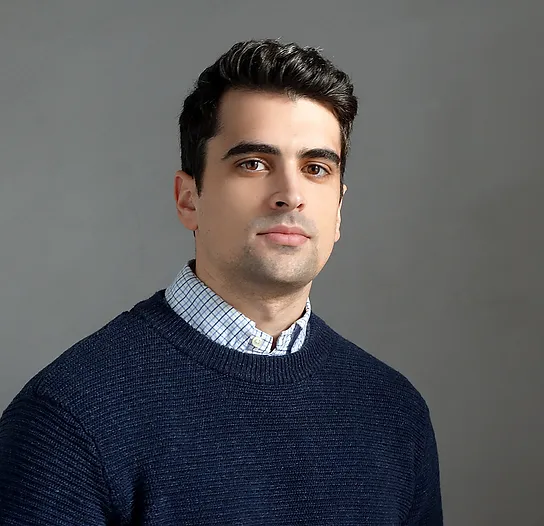Pierre is a leading college and graduate admissions consultant with extensive experience in education and entrepreneurship. His advice has been featured on Forbes.com, U.S. News, CNN Business, the Washington Post, ABC News, Business Insider, and more.

Once you have an idea for your common application essay, also known as your personal statement (see my article here on coming up with a strong idea if you don’t yet), and you’ve mustered the courage to write up a first draft (see this piece on writing a first draft), how do you work that piece into something ready to submit? How do you know when you’re done? How do you know if it’s any good?
This is where you will spend most of your time working on your essay, but not all editing is the same. As you progress, you should focus on smaller and smaller aspects and become increasingly confident with the content. I’m going to break this process into three critical stages: structural changes, detail refinement, and final touches.
Structural Changes
In this first stage, your goal is to solidify the outline of your essay and confirm that you’ve accomplished what you want to in the essay. Give your rough draft a quick read all the way from top to bottom without stopping. How did it feel? Your gut is the best indicator of whether the essay is heading in the right direction, what worked, and what didn’t.
Don’t worry about the conclusion too much now–it often naturally falls into place as you work on the main section of the essay. Similarly, don’t worry about the word count. You can always find a way to make the language more dense later, but adding content last minute is often disruptive. It’s much better now to be over word count than under. At this stage, you want to be thinking primarily about whether the main body paragraphs communicate the right message.
One exercise I often employ at this point is to write down 10-15 things about yourself that you want to tell the admissions officer. They can be anything from “I am a great team member” and “I have an entrepreneurial spirit” to “I am going into the field of cybersecurity.” How many of these are communicated by your essay? I find that fantastic essays combine around 8-10 important pieces of information about the reader. Good essays have 4-7 and poor essays often only have a few. Can you pack in more by swapping out a paragraph about one activity for another? Can you add in a section about another relevant experience that demonstrates a few more of these features? If so, do it regardless of the word count–you can always work to cut down later.
Once you have made sure you cover all the information you want in the essay, ask a couple more questions. Did you diverge from the storyline or go off track anywhere? If so, you need to find a way to tie this part back into the central narrative. Think again about how this activity or event connects to the others–if you can’t figure it out, the admissions officers certainly won’t be able to.
Lastly, consider the introduction. Beginning with the most central part of the story is a great way to avoid a boring introduction by starting the story immediately while covering basic information about the essay’s topic and main message. This saves words, makes the essay more fun to read, and convinces the extremely busy admissions officers to spend the time to carefully read the rest of the essay. There’s certainly no issue with starting at the beginning (whether literally the start of your story’s timeline or the logical beginning), but switching things up a little bit can keep the reader engaged.
Detail Refinement
In this second stage of essay editing, your goal is to make your points more clear and powerful through effective descriptions. Take the following example of how you can turn a boring draft paragraph into something much stronger by enhancing the details and being selective with what to include.
Before:
“In my sophomore year, I decided to stop taking the band class and halt my long trumpet career. I chose instead to take other classes. I really loved biology and physics in particular, and was very excited by the content in these classes, so I decided I wanted to take more science.”
After:
“For sophomore year I switched all my electives to science courses, taking advanced biology and physics. My vibrant curiosity flourished as we studied the functions of the liver, rotational
motion, insect anatomy, frictional coefficients, plant reproduction and more—as if every
magnetic field diagram I drew pulled me further in.”
In removing the irrelevant information about playing trumpet and adding just a few details about the class, along with some wordplay, this paragraph transforms into something compelling, descriptive, and playful.
Remember “Show, don’t tell.” This is a common phrase your English teacher has probably written on your papers for years, but it’s especially important in creative writing. The reader is never going to fully believe your passion for science from reading “I really loved biology and physics,” but including a few details can illustrate your genuine interest.
Avoid mentioning any awards or accomplishments in your personal statement. These should be saved for the honors and awards section of the common application, and if you’re truly talented in a discipline it should come across in the stories you tell! Describing the app you coded to connect patients with healthcare providers is much more indicative of your abilities than just saying “I also won first place at a hackathon.” Go through your essay and think to yourself whether you can rewrite anything that says “I learned…,” “I realized…,” or “I felt…” Feelings can always be demonstrated through action (“My eyes beamed” instead of “I was happy”) and what you learned should be illustrated through examples.
This is also a great time to go back to the conclusion. After a while looking at the body, you might now have a better sense of how the points you’ve made fit together. This is a great place to address the “What’s next?” question. More explicitly than elsewhere in the essay, describe the relevance of your argument to your ability to be an effective college student and leader on campus and beyond. It never hurts to refer back to the introduction in a clever way, but it’s not necessary.
Final Touches
After you have made sure that your essay contains strong messages about you as a person and student and that the details are sharp, start working on the technical language and grammar. Does that one word mean what you think it means? If you aren’t sure, then don’t include it. It’s very obvious when students include synonyms that are out of place. However, if you are willing to go through your essay and make all of the adjectives and verbs are interesting without using words you don’t know, it is worth the time. “Did” can be replaced with “completed” or “accomplished.” Avoid repeating uncommon verbs or words in the same paragraph as it can read awkwardly. Combine short choppy sentences into ones that flow together well and demonstrate your writing ability. This will also help you remove unnecessary words if you are over the word count.
After reading hundreds or thousands of admissions essays, it’s impossible not to have some grammatical pet peeves. Make sure that you check your grammar with an English teacher or online reference if you’re unsure to avoid irritating the admissions officers. Remember hyphens are used between compound adjectives that come before a noun but not after (“The elephant-sized cake was elephant sized”) and with almost all words beginning with “self” (“self-paced” for example). Spell out numbers from one to ten at least, and up to as high as one hundred if that’s your thing. Use commas with coordinating conjunctions between independent clauses, but don’t use them between an independent and a dependent clause (“I went to the store but didn’t get eggs” has no comma, but “I went to the store, and I didn’t get any eggs” does.)
Summary
There are three stages of editing a rough draft into a final personal statement ready for submission, each of which is critical and time intensive. Don’t try to rush any of them!
In the beginning, focus on major structural features. Is your narrative communicating the right ideas? If not, switch parts out or add new content in. Make sure logical flow is sound.
Next, refine the details you include so they are impactful and clear with “showing” instead of “telling.” If you want, try to find some places to include tasteful wordplay.
Lastly, refine your language, check your grammar, and make sure you are within the maximum word count.
If you decide you want to change something fundamental about your essay while working on the details or final touches, make sure to go back and refine this new section especially carefully.
You’ll know you’re finished with your essay when you can put it down and come back to it in a few days with fresh eyes without finding anything that bothers you. If you consistently like your essay and how it reflects your character and writing, it will work well for your common application and it’s probably about ready to go!
If you need any help with your essay, our team of Ivy League consultants is ready to provide you with the guidance you require.




